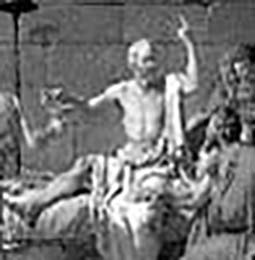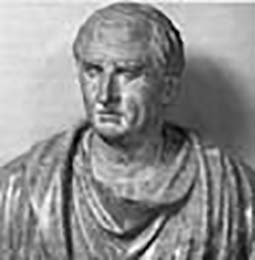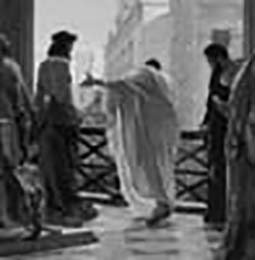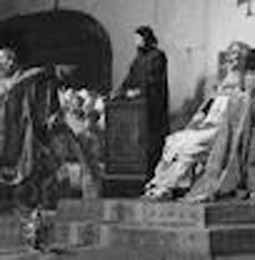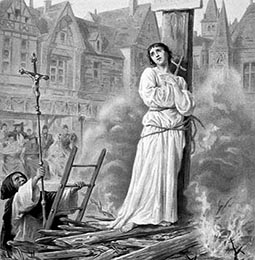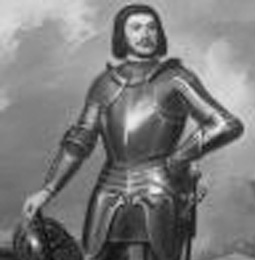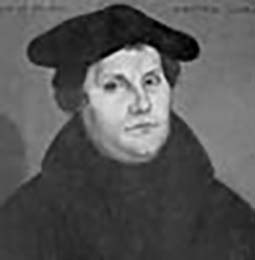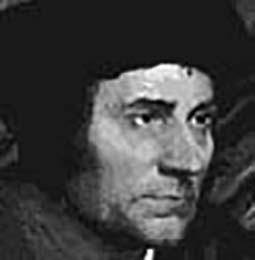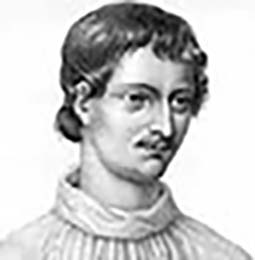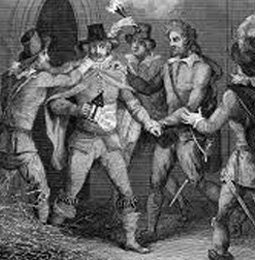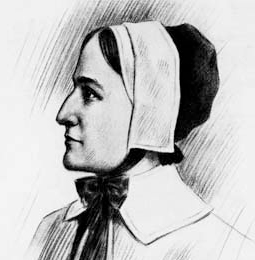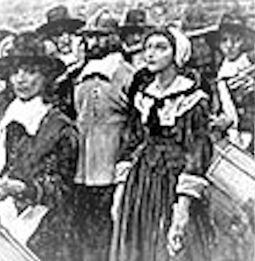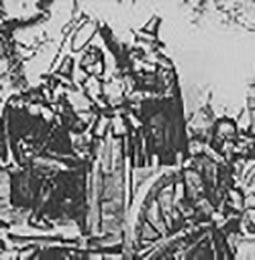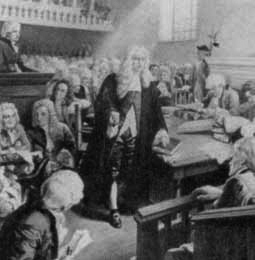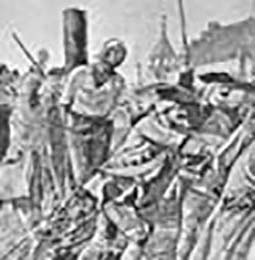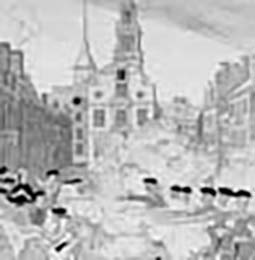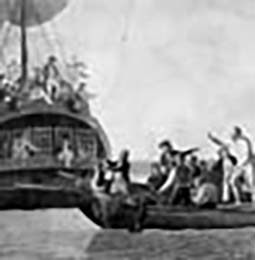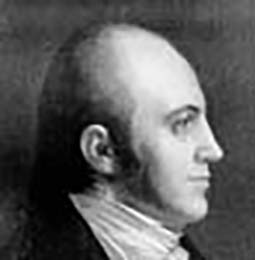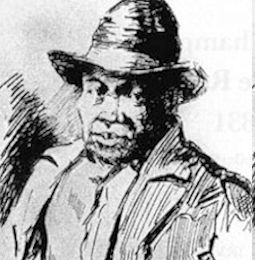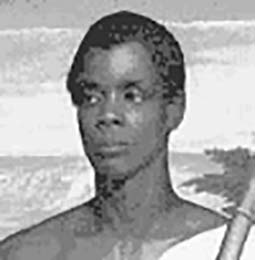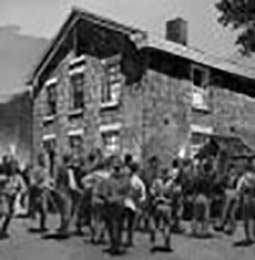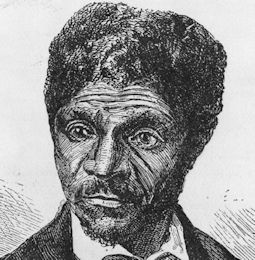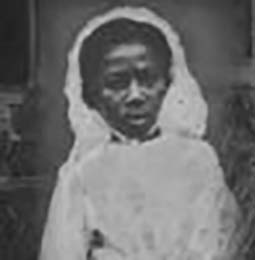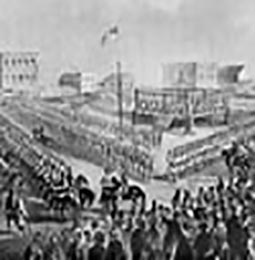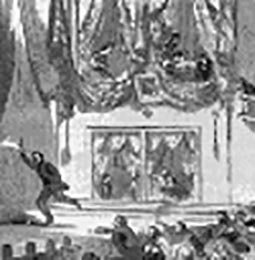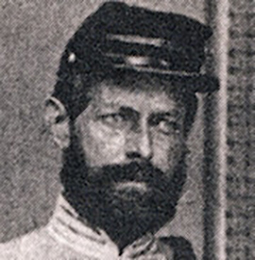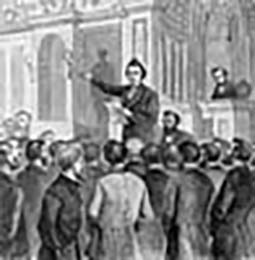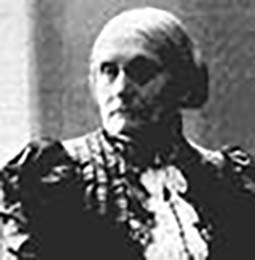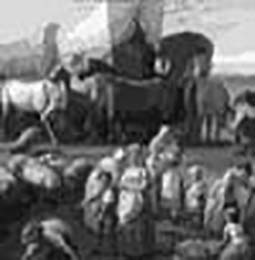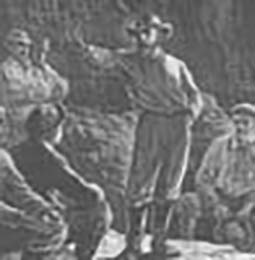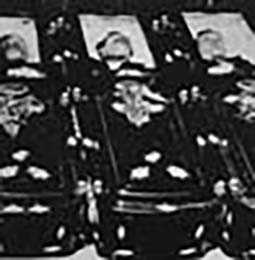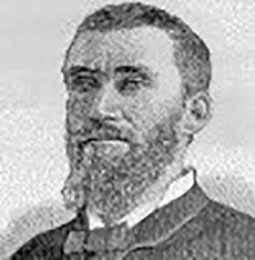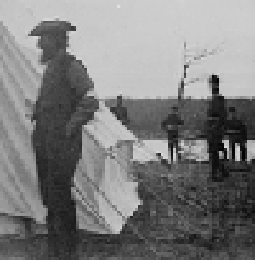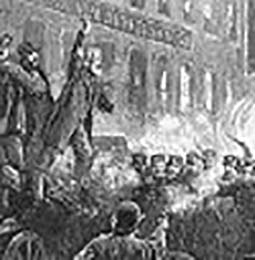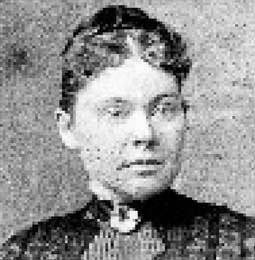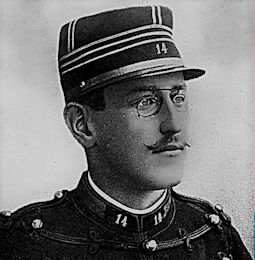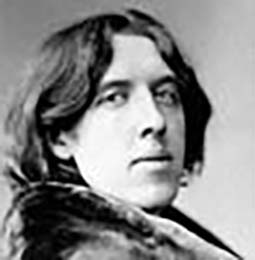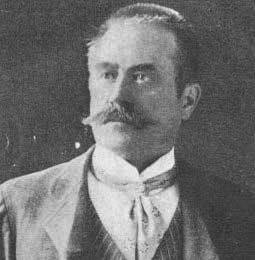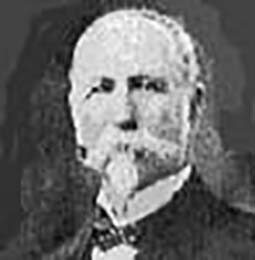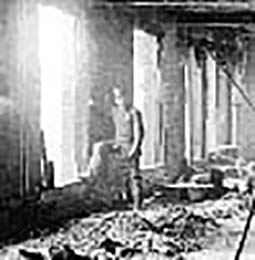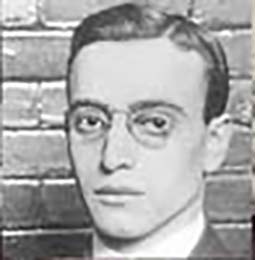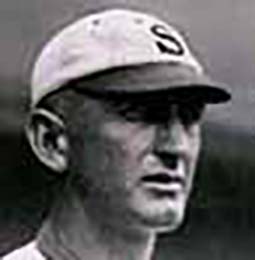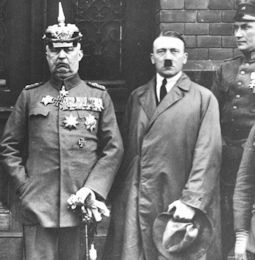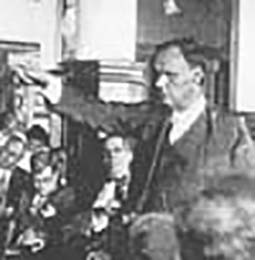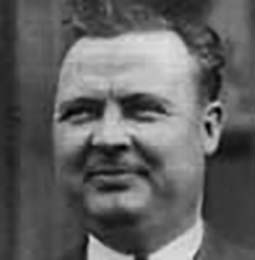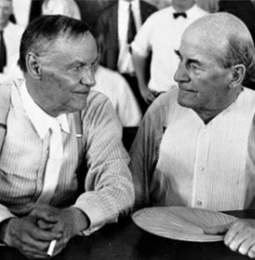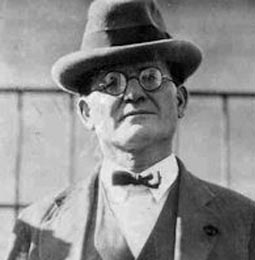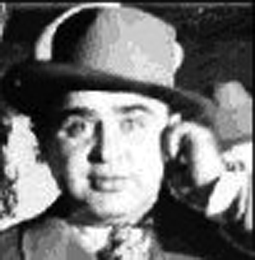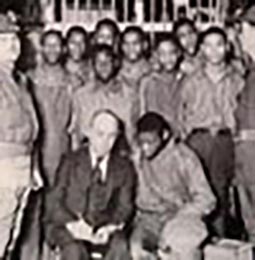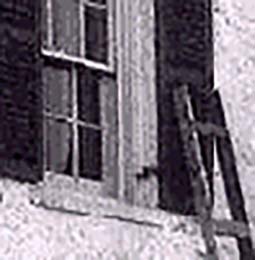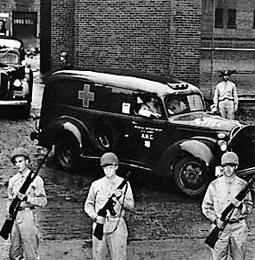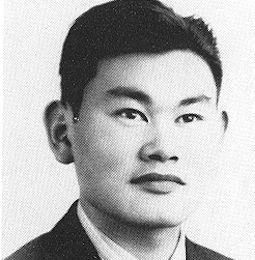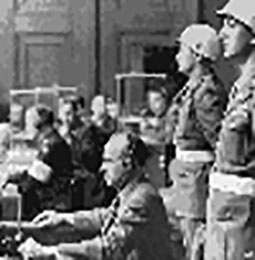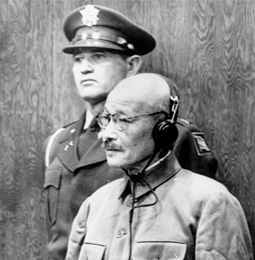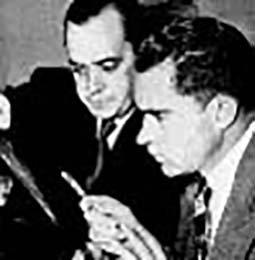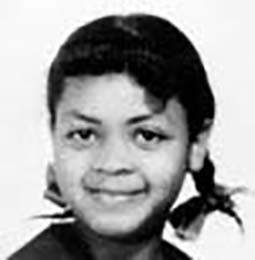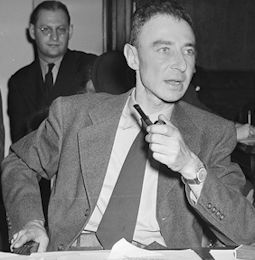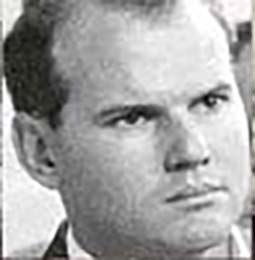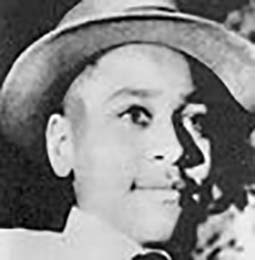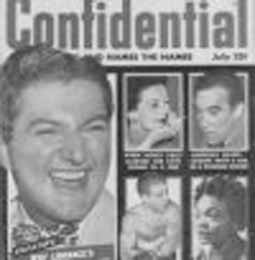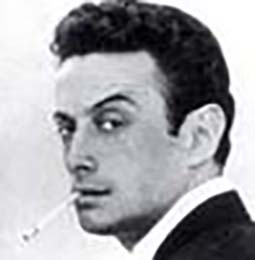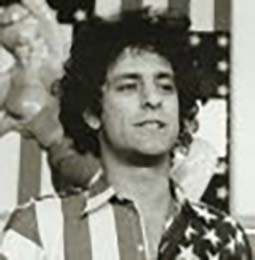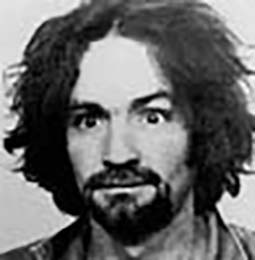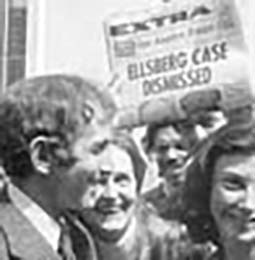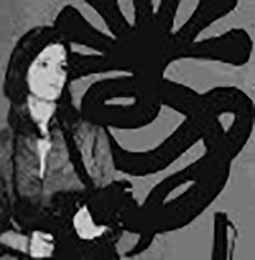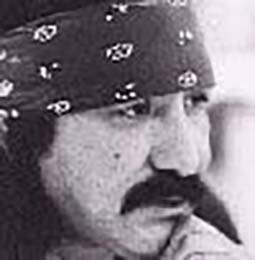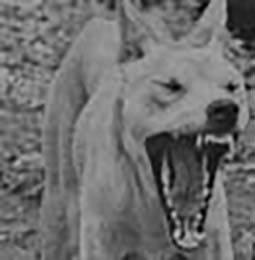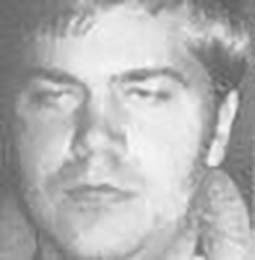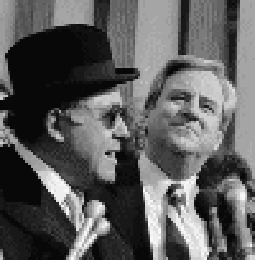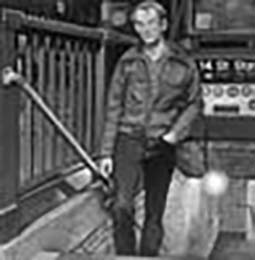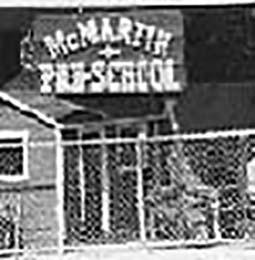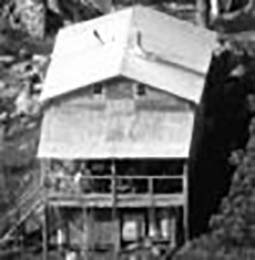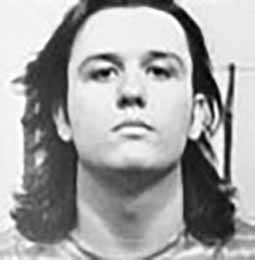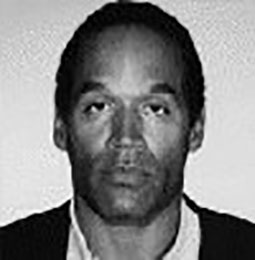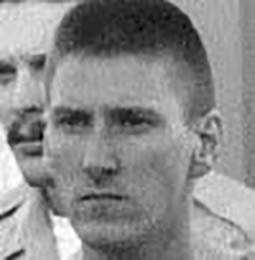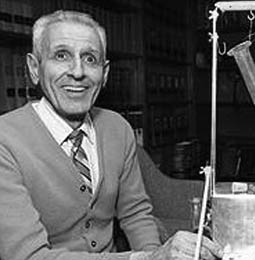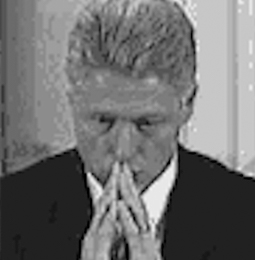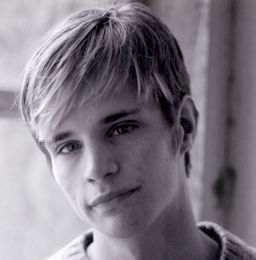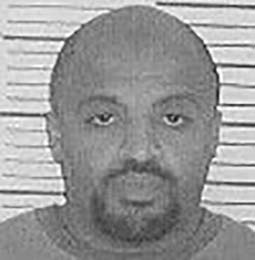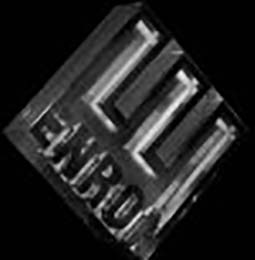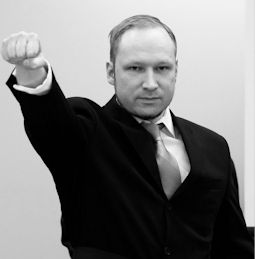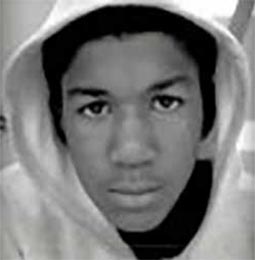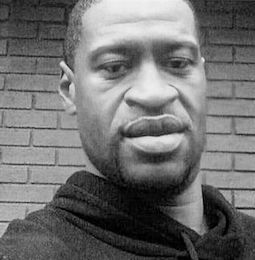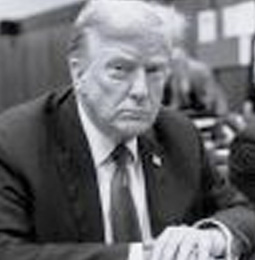BY MR. SPELLACY:
Q: How long have you been employed at the Cuyahoga County Coroner's office?
A: 27 1/2 years.
Q: What are your duties as a member of the Cuyahoga County Coroner's office?
A: I am the Medical Technologist in the laboratory.
Q: And have you been engaged in this work for the past 27 years?
A: I have.
Q: Would you give us an outline of your educational background, please?
A: I was graduated from Dennison University. I took postgraduate work in biochemistry, immunology, physical chemistry, at Western Reserve University, and have had six years experience-I am sorry-medical technology training at Mount Sinai Hospital here in Cleveland.
Q: And when was that?
A: In 1935.
Q: Did you receive a Degree from Dennison University?
A: Yes, Bachelor of Science.
Q: Now, have you had occasion to teach with regard to the field that you are in?
A: Yes, I have.
Q: And where do you teach?
A: At Western Reserve University and through the Law Medicine Center.
Q: Do you teach anywhere else beside the Law Medicine Center at Western Reserve University?
A: No. Occasional lectures. My title is Lecturer. in Legal Medicine to the Department of Pathology, School of Medicine, Western Reserve University.
Q: That is your title?
A: Yes.
Q: You do have occasion to lecture at the medical school?
A: Yes, occasionally, and to law students.
Q: Pardon me?
A: And to law students.
Q: Can you give us an outline of your professional affiliations that you have and organizations?
A: I am a member of the American Chemical Society, a Fellow in the American Association for the Advancement of Science, a Fellow in the American Academy of Forensic Sciences, a member of the National, State and Local Medical Technology Societies.
Q: Now, have you had occasion to write papers with regard to the work that you are engaged in?
A: Yes, sir.
Q: Will you tell us briefly some of those articles that you have written?
A: "Use of Associated Evidence," which appeared in the Journal of Criminal Law and Criminology, and Police Science.
Q: Keep your voice up.
A: I have a little sore throat, I am sorry. "Trace Evidence Discussion," which appeared in Postgraduate Medicine. The most recent was "Fundamentals of Crime Laboratory Investigations. I am sorry.
THE COURT: Would you like some water, Miss Cowan?
THE WITNESS: I think it would be a good idea.
A: Which appeared in the American Medical Technology Journal. I think there are others that I have forgotten.
Q: These are the ones you recall, is that right?
A: Yes.
Q: Miss Cowan, will you tell us briefly what your duties are as a medical technologist in the Cuyahoga County Coroner's office, just what do you do?
A: Presently, and for the past 16 years, I have been-my attention has been directed to most and now specifically to the trace evidence examinations, which is the examination of any material, mark, or sign, that is to say, traces, which will afford a means of demonstrating source or identity, activity or use or association between persons and objects, or between individuals involved in any type of incident.
This includes examination conducted at the scene, examination of clothing, examination of suspected weapons or materials collected from the scene of the incident, examinations of blood stains, hairs, fibers, and evidentiary material.
Q: Previously you mentioned the word immunology; is that correct?
A: Yes, sir.
Q: What is that?
A: Immunology is a science more directly concerned with antibody, antigen reactions, which are responsible, for instance, for immunity and disease which people are most familiar with. But it includes, also, the reactions of blood groupings.
Q: Then, immunology simply has to do with blood, is that correct?
A: More than that, but specifically my interest has been in the field of blood grouping.
Q: As a medical technologist with the County Coroner's office, have you had occasion to work with blood?
A: Yes, sir.
Q: How often would you say that you do this?
A: Well, actually, I work with it every day, one type or another, either fluid blood being grouped, because it is routine in our office, we group blood from homicide victims and traffic victims, so that the blood grouping on fluid blood is performed every day. The examination of blood stain is frequent and I would say certainly several times a week.
Q: Several times a week?
A: Yes.
Q: And you have been engaged in this type of work for how long?
A: 27 1/.2 years. That is, with the blood stains at the Coroner's office. Before that at the hospital.
Q: Now, Miss Cowan, directing your attention to the month of July in the year 1954, did you have occasion to conduct any investigations in connection with this case before this Court and Jury?
A: I did.
Q: At that time you were employed by the County Coroner's office, is that correct?
A: That's correct.
Q: Were you at that time a medical technologist with them?
A: Yes, sir.
Q: Now, did you have occasion at that time to examine the blood of Marilyn Sheppard?
A: I did.
Q: And what examination did you conduct on that blood?
A: I did the blood grouping for the A-B factors.
Q: You will have to tell us what the A-B factors are.
A: This is the major blood group of O, A, B and A-B.
Q: In other words, there are four groups?
A: These are the four major blood groups into which all the population can be divided.
Q: What are those four groups again?
A: O, A, B and A-B.
Q: These are the four major groups that all people can be divided into, is that correct?
A: That's correct....
Q: For the record, State's Exhibit 24 is the man's watch. Now, what examination did you first conduct on that man's watch?
A: As I said, Dr. Gerber showed these items to me in the box, and apprised me of the fact that they had not been examined for fingerprints, and warned me not to handle them until I had looked at them which is our routine with blood stained articles.
It was taken to the laboratory in the box~ each item laid out on the microscope stage, still in the cleansing tissue; the cleaning tissue opened up then to reveal the item.
The item was handled with tweezers, the tips of which were protected with rubber tubing, and the watch or other items were examined on all edges with the lights directed for any type of pattern imprint.
Q: What do you mean by pattern imprint?
A: An imprint that would be made from fingerprints or fabrics, indentations of any type.
Q: Did you find any pattern imprints?
A: I did not.
Q: Who performed this examination that you have just described for us?
A: I performed the examination myself. Mr. Johnson, our photographer, was present; and also looked through the scope, but the examination was mine.
Q: Did you have occasion to examine other articles at that time?
A: Yes, sir all of the items from this box were handled in the same manner.
Q: Referring to State's Exhibit 23, will you tell us whether or not the same examination was conducted on that?
A: It was.
Q: What were your findings with regard to State's Exhibit 23?
A: There was no evidence of any pattern imprint.
Q: Now, referring to State's Exhibit 25, can you tell us whether or not any examination was made with regard to that?
A: It was examined in exactly the same manner.
Q: State's Exhibit 25 being the ring. State's Exhibit 23, being the chain. Did you find anything on State's Exhibit 25?
A: I did not.
Q: And can you tell us what examination if any was made on State's Exhibit 22, a lady's wristwatch?
A: This was examined similarly. It was presented as you see it here, in a vial, plastic vial. It was removed from the vial with the forceps, the tweezers, protected with rubber tips, and examined likewise under the stereomicroscope.
Q: Now, you indicated an examination of State's Exhibit 24. Can you tell us what your first observations were of State's Exhibit 24, the man's watch?
A: Well, the first thing that was noted was the blood staining that was present on the watch.
Q: After noticing the blood staining on your first observation, did you have occasion to conduct a further examination, a more detailed examination of that watch, State's Exhibit 24?
A: In regard to the stain?
Q: Yes.
A: Yes, the watch was steady as to the pattern and type of stain present.
Q: Now, did you have occasion to take any pictures of State's Exhibit 24?
A: Yes.
Q: When were those pictures taken?
A: Again, the ones that were taken in my presence were stereo photographs that were taken in the 7th by Mr. Johnson in my presence. The watch was photographed first by Mr. Johnson immediately after I had examined it under the stereomicroscope; he took it to photography and photographed it.
Q: And were you present when that photo was taken?
A: Not the first photograph that was taken originally. I was present when the stereo--
Q: When a stereo photo was taken, is that correct?
A: That's correct.
Q: And do you recall what portion of the watch the stereo photo was taken of?
A: The stereo photo was taken of the area below the usual position of the numeral six, and the wristband, the first two links of the wristband, the wristband having 37 links, each one with a groove through the center, so the appearance is twice as many-there are 37 links.
Q: You indicated there was a pattern on the watch, is that correct, on State's Exhibit 24?
A: A stained pattern, yes, across the crystal of the watch there was a thin film that was typical of smearing. Around the rim of the watch there was blood in the crevice, between the crystal and the rim. On the rim and on the wristband there were numerous spatter type staining of large and small drops of varying sizes, some drops coalescing with each other, and some drops, fine drops, superimposed on them. The fine spray or spattering type of drops extending on what I call the medial side of the band that is the part running from the watch down this way on the wrist. There were fine tiny stains to beyond the link where there is the dent here, and a few even all the way around to the middle.
Q: Now, you said splatter type stains; what do you mean by splatter?
A: Spatter type stain is composed of a spray of blood, of which the original size of a drop is broken up by force, and blood moving in a direction will give various types of deposits, and most of them will be very small stains.
Q: Now, you indicated that there was a photo taken, a stereo photo, is that correct?
A: That's correct.
Q: For what purposes was a stereo photo taken?
A: It was taken to demonstrate the presence of a drop superimposed upon another drop.
Q: And do you have that photo with you?
A: I do.
Q: May I have it, please?
A: Yes.
MR. SPELLACY: Will you mark this, please. (State's Exhibit 69 was marked for identification by the reporter.)
Q: Miss Cowan, showing you what has been marked for identification purposes as State's Exhibit 69, can you identify that for us, please?
A: I can. This is-
Q: Keep your voice up, please.
A: This is one of the set of stereo pictures that was taken in my presence, a stereo-may I show the other one?
Q: Yes, please.
A: I have a little difficulty explaining, I think. Ordinarily a stereo camera, as with a stereomicroscope, takes two views directed from different angles, so again, your two eyes are seeing in stereo. One of these has been removed and mounted in the single mount.
Q: And for what purpose was it removed and mounted in a single mount?
A: So that it could be projected in an ordinary projector. Of course, now it loses the three dimensional effect, and you see it only in two dimensions.
Q: Referring once again to State's Exhibit 69, was this a photo that was taken in your presence?
A: It was.
Q: And is this a fair and accurate portrayal of the watch as you saw it when this photo was taken?
A: Of a portion of the watch.
Q: Of a portion of the watch; what portion of the watch was this taken of?
A: This is the medial area below what would be the normal position of the numeral six.
Q: Could you indicate on State's Exhibit 24?
A: (Indicating.)
Q: All right, just below the number six, then, is that correct?
A: Yes.
MR. SPELLACY: If it please the Court, at this time I would offer into evidence State's Exhibit 69.
MR. BAILEY: Your Honor, I don't fully understand what we have here. This appears to be half of a stereo.
If the witness represents that it is the same as an ordinary camera would take, forgetting any stereo aspects, I would have no objection.
I just don't fully understand what it is supposed to show, or whether it has some distortion due to the peculiarities of a stereo camera.
THE COURT: May I see counsel?
(Thereupon counsel and Court conferred at the Court's bench outside the hearing of the Jury.)
THE COURT: Please proceed, counselor.
Q: Miss Cowan, referring once again to State's Exhibit 69, the photo, is what is depicted here now what you would get if you took this picture with a regular camera, rather than a stereo?
A: To the best of my knowledge, yes. I am not a photographer.
Q: At any rate, is this a fair and accurate representation of what you saw?
A: Yes.
MR. SPELLACY: At this time, then, if it please the Court, I will offer in evidence State's Exhibit 69.
MR. BAILEY: No objection, your Honor.
THE COURT: Received.
MR. SPELLACY: And request permission of the Court to show this to the Jury.
THE COURT: Permission granted. , (Thereupon the exhibit was shown on the projection screen.)
A: The rim of the watch is out of focus, because the concentration was on the blood stain. But you can see that there are numerous tiny-may I have the pointer?
Q: Yes.
A: That these are discrete stains.
Q: What do you mean by discrete stains?
A: They are isolated individual stains made by a single droplet.
Q: You referred to a pattern before, and what was that pattern?
A: The pattern was a spatter pattern, which is composed of the varying sizes. Again, the photograph was taken concentrating on this stain, which would be opposite the numeral six, showing that it is a crusted stain and superimposed upon it, and this is why we try, to take it in three dimensional, so that we can show that this stain here, this drop here, was superimposed upon the other stain.
Q: What do you mean by superimposed on the other stain?
A: It was on top of it.
Q: It was on top of it?
A: Yes. One was deposited first, and the other deposited on top of it, when this was beginning to congeal.
Q: And what is congeal?
A: Well, like jello congeals.
Q: Is that part of the drawing process?
A: The beginning of it, yes.
Q: So if I understand you correctly, some time after the one had landed on the watch, and had started to congeal, another one landed on top of that, is that correct?
A: Yes.
Q: Calling your attention now to just directly underneath the numeral six on the watch portion itself, what is that, in that area?
A: These are-this is the rim of the watch, and these are individual spatter type stains.
Q: Now, Miss Cowan, while we have the projector up, did you have occasion to examine other photos in connection with this watch?
A: Yes, sir.
Q: Now, if you will step over this way, .please; showing you what has been marked for identification purposes as State's Exhibit 42, can you tell us what that is?
A: Yes, sir. That is the photograph that was taken originally prior to this. This was taken on the 5th of July.
Q: Can you tell us what the examination of the other portions of the watch revealed insofar as a spatter stain?
A: There were, as I said, these fine tiny spray type of droplet stain extending on the lateral surface of the wristband, around to the under surface of the wristband.
There were fewer on the lateral side, that is, it would go from the position of 12, of the numeral 12, to around about the back of the band.
Q: If I understand you correctly, then, most of these spatter stains were from the numeral six around towards the bottom of the watch?
A: That's correct.
Q: And there were fewer from the numeral 12 around in that direction is that correct?
A: Yes.
MR. SPELLACY: If it please the Court, at this time I would request permission to show State's Exhibit 42 and have Miss Cowan explain that.
THE COURT: Please proceed....
Q: Now, showing you once again what has been marked for identification as State's Exhibit 42, would you please show that to the Jury?
A: We will have to use the large projector.
Q. Now, can you tell us what this photo shows with regard to the examination you made for blood?
A: In comparison with a previous photograph we just showed, this is the stain that was photographed in the close-up. These are the small discrete spatter type stains on the rim of the watch. This is a film or smear type stain on the crystal, and these are deposits made by flying drops of blood in motion that only could be making this type of drop coming at an angle.
Q: And why do you say that?
A: Because this is the way these stains are made.
Q: Pardon me?
A: Do you want a lecture? I am sorry.
Q: Is this based on your experience in blood work?
A: Yes, sir.
Q: Particularly directing your attention to the drop over the numeral, I guess it would be the figure 11-
A: Yes.
Q: could you describe that for us, please?
A: This is a drop that has been drawn out, elongated, along a line of force. Normally a drop of blood is spherical, and when it strikes a surface, a metal surface such as this, perpendicularly with a low speed or simply falls on it, it will be a round type of stain. When it strikes at an angle, you will have it adhering and then drawing out along the line of force.
Q: Are you able to tell us what angle that particular spatter mark struck at?
A: The indication is that it struck here on the broad surface and was pulled out, as it were, along to this little tailing effect here. I believe some--Dr. Adelson refers to them as tadpoles.
Q: Pardon me?
A: Dr. Adelson refers to them as tadpoles.
Q: Now, immediately above that, above that mark, there is another area; what is that?
A: This I would not want to say definitely whether this is a smatter of several drops or whether this is -it would appear from this, that it is a large drop which may be made up of two drops hitting simultaneously.
Q: Directing your attention now below the numeral six, is that an area that you have previously described for us?
A: On the rim here?
Q: Yes.
A: On the rim and this large stain are the ones that are shown in the stereo photograph.
Q: Are there other spatterings on that watch that are shown in that picture?
A: Shown in this picture, yes. Here for instance is a very small one, this is definitely, this comes from a spatter type staining. These very small ones. The larger ones, in that they are broken up by the grooves in the wristband itself, it is difficult to tell whether these are multiple small ones hitting at approximately the same time, or whether they were larger drops.
Q: Is that the extent of the spatterings, then?
A: As shown in this photograph, yes. There is this one on the crystal. There are these. This could be a smearing type of stain. This is on the crystal, certainly smearing. These are spatter type.
Q: Pardon me?
A: These are spatter type, the smaller, and the smaller discrete type.
Cross-examination by F. Lee Bailey
BY MR. BAILEY:
Q: Did you give us an opinion this morning with reference to the watch of Dr. Sam Sheppard which is marked as Exhibit 24, and with reference to a small spot with a tail on it appearing on the rim of the watch just above the figure 11 or where the figure 11 should be, that you could tell the direction of travel of that spot as it struck the watch, based on the tail that you saw?
A: I meant to infer that this is typical of this reaction, but the general pattern of staining was more important.
Q: This was the only spot you found with the tail?
A: No. This is the only one that shows in the photograph.
Q: Are there others that you did not cause to be photographed?
A: Yes.
Q: Where were they?
A: In the lateral part of the band there is one that I believe still shows in the black and white photograph.
Q: Do you know where that photograph is?
A: It would be an exhibit.
Q: All right. Are these the only two blood spots on the watch that had the little tail on them indicating a direction?
A: No.
Q: Are there more that you didn't photograph or that you did photograph?
A: Not every blood spatter was photographed.
Q: If a blood spatter is round and has a smooth circumference to it, that is an indication of low velocity at the time it strikes, is it not, generally?
A: Generally.
Q: If a blood spot is round and has jagged edges around it that is an indication of greater velocity at the time of incidence or striking, true?
A: Yes.
Q: And the more jagged the edge, generally the greater the velocity, true?
A: Yes.
Q: If the velocity is sufficient, the blood spot is likely to break up into smaller globules of spots, true?
A: True.
Q: Where a large spot of blood, and by large I have in mind something between a quarter and a half inch in diameter, where a large spot of blood hits a vertical surface such as the wardrobe door, and does not run down but runs off at an angle, there is an indication there as to the angle at which it hit the surface, true?
A: This depends, too, on the weight of the drop itself, the size of the drop and the weight of the drop.
Q: Understood, but in order for the trail to go off at an angle, other than the vertical, it must have struck at an angle other than vertical, isn't that true?
A: Exactly 90 degrees, yes-
Q: In order to get a direction of trail-off from a blood spot on a vertical flat surface that is other than straight down, it is necessary for that blood spot to hit the surface at something other than a straight down angle that is my question.
A: Unless something disturbed it.
Q: All right, assuming that nothing disturbed it that would be true?
A: Yes.
Q: Did you find any blood spots on the wardrobe door that had such characteristics, that is to say, a flow, or a tail trailing off but not straight down?
A: Not a tail, no.
Q: Any indication of flow from the original spot?
A: There was one that didn't follow the rest of the general pattern.
Q: Miss Cowan, I show you a close-up of the door depicted in Defense Exhibit M, showing a large spot of blood and a somewhat smaller spot underneath it, this being a panel of the wardrobe door, and I now refer you to Defense Exhibit D, and ask you whether or not you recognize that spot?
A: Yes.
Q: Now, I show you a greater enlargement, Defense Exhibit B, showing you also at the same time Defense Exhibits M and D, and ask you whether or not that is not the same spot?
A: Yes.
THE COURT: Counselor, is Exhibit B an enlargement of Exhibit D?
MR. BAILEY: Yes, you’re Honor. Exhibit D is a close-up of Exhibit M, and B is a close-up of M or D as you will have it. I now show the witness Defense Exhibit A and ask her whether or not that is also an enlargement of the spot shown in Exhibit M and again in Exhibit D, being the lower of the two large spots.
THE WITNESS: Yes.
Q: Now, did you examine those spots, Miss Cowan?
A: Visually only.
Q: And were you able to make a determination as to whether those spots were deposited on that door by weapon throw-off, or in some other manner?
A: They were consistent with weapon throw-off, and might have been a composite or clotting blood.
Q: How large a drop can a weapon, any metallic weapon, carry before it will break up into smaller drops as it is thrown off, is there a limit?
A: This is in the realm of conjecture.
Q: Have you ever made experiments to determine whether or not a drop that large could possibly be thrown off by a swinging weapon?
A: Not myself, no.
Q: Have you made studies of literature where other people have made such tests?
A: The only result of-
Q: Have you made studies?
A: --of experience.
Q: Have you made studies of literature where other people have made such tests?
A: No....
Q: …You examined this watch and you noted of course that the band was broken?
A: Yes.
Q: And that was broken when you first saw it, wasn't it?
A: It was.
Q: Now, did you examine the break in the band to determine whether or not blood was present where it could only have gotten after the break was accomplished?
A: The band was examined generally, in general staining.
Q: Let me rephrase the question to make it clear. As we examine the watch, there is a portion of the bracelet where the under link is broken away from the upper link or over link, and a hole appears where there was some sort of rivet or fastener, true?
A: Yes.
Q: Was a specific examination made in that hole to determine whether or not blood was placed in the watch after the watch was broken or the band was broken?
A: No.
Q: You examined the watch for fingerprints?
A: Yes, or any pattern print.
Q: Did you ever submit it to someone who was qualified to examine for fingerprints, that is to say, a fingerprint expert?
A: It is general procedure-no.
Q: You did not. In 1954 did you consider yourself to be a qualified fingerprint expert?
A: Not in identifying fingerprints, but in recognized pattern imprints, yes.
Q: Did you use any dusting powder to try and get a print off this watch?
A: No.
Q: Off the ring?
A: No.
Q: Off the key chain or the attendant keys?
A: No.
Q: Would you say that dusting powder would be the best method to lift or discover a latent print on those surfaces?
A: "Any latent print would show up under the indirect lighting under the stereo microscope, and this would be an indication-
Q: Would you agree that dusting powder would have been a better method to make this test for fingerprints?
A: No.
Q: To your knowledge was this watch ever examined to determine the cause of stoppage?
A: It was taken to a watch repairman.
Q: Beatty's by chance?
A: Yes.
Q: Did you get a report from Beatty's as to their findings as to the interior of this watch, its mechanical condition, any impact that may be shown?
A: The report I believe went to Dr. Gerber.
Q: Well, do you have any idea where that report is?
A: I would assume that it was with the case.
Q: Then you have no personal knowledge of where it might be today, I take it, if your assumption proves incorrect?
A: I recollect the last time I looked at the case there was a communication, but I do not know the contents of it.
Q: Was the watch running again by the time you got it, or was it stopped at 4: 15, or was it stopped at some other time?
A: I do not recollect. I know-
Q: Would it help you if you glanced at the photograph you took of it to see whether it's still set for 4:15?
A: No, I know it does not say 4: 15.
Q: Then it was running some-
A: As I recall, the watch would run a short time and stop, but I can't tell you how long.
Q: The watch of Marilyn Sheppard was discovered, so the evidence has indicated, with a time I believe 10 after three, and you photographed that watch?
A: It was photographed by Mr. Johnson.
Q: Do you know whether or not that watch ever started running again?
A: Yes, it did.
Q: Was it examined in order to determine whether or not it stopped at 10 past three for some reason?
A: It was examined at the same time as the other.
Q: And I take it the report of Marilyn’s is somewhere with the report of Sam's watch?
A: Yes.
Q: You last saw them together?
A: I saw a single communication.
Q: A single report on both watches?
A: A single communication. I cannot tell you the contents....
Q: At the time it was given to you, these things were all wrapped up in tissue paper of some kind?
A: In cleansing tissue.
Q: Were you informed
A: Individually.
Q: Were you informed by anyone that the watch and the ring had already been handled by two young boys before they were ever given to the detectives?
MR. SPELLACY: Objection.
THE COURT: Sustained. Oh, she may answer. Overruled. She may answer the question.
Do you understand the question, please?
A: Yes. When Dr. Gerber showed me this, these, he said, "I don't know, they have not been examined by fingerprint people, but they were handled before they were given to me."
Source: Paul Holmes, Retrial: Murder and Dr. Sam Sheppard (1966)






